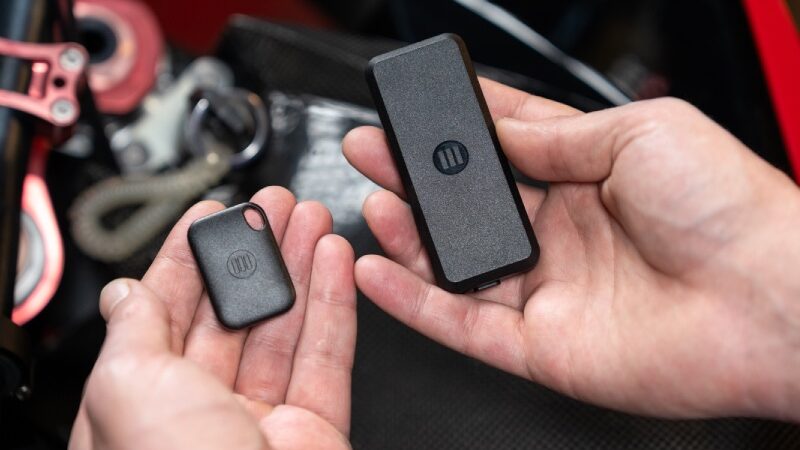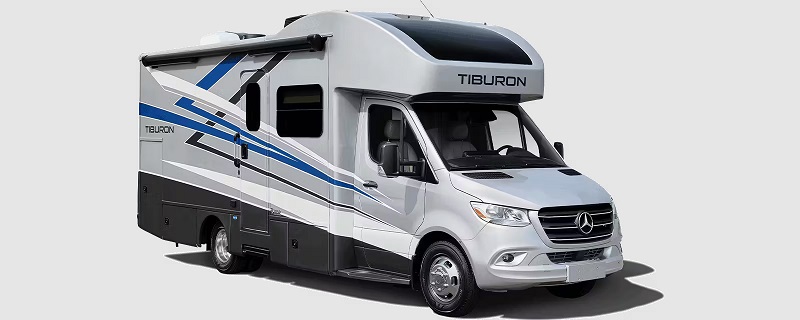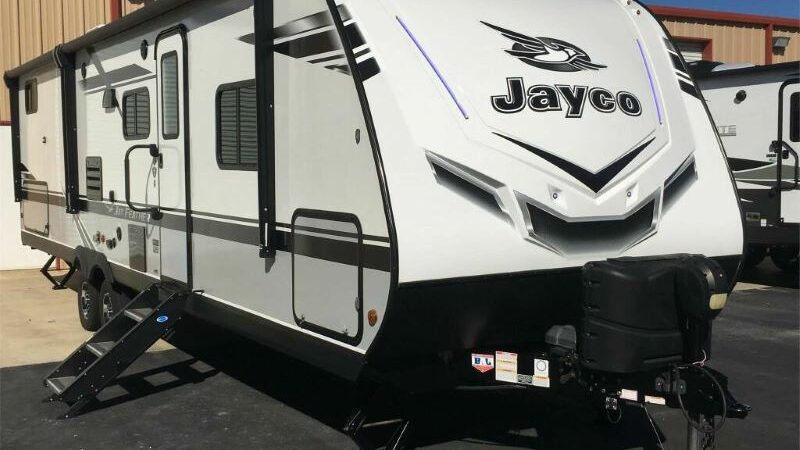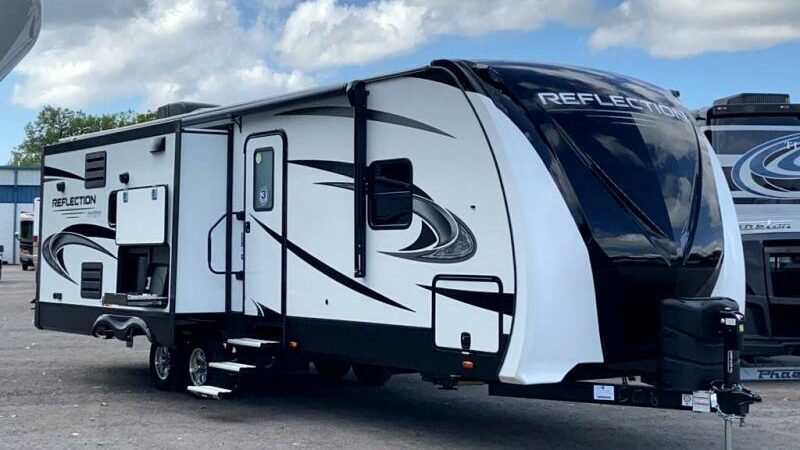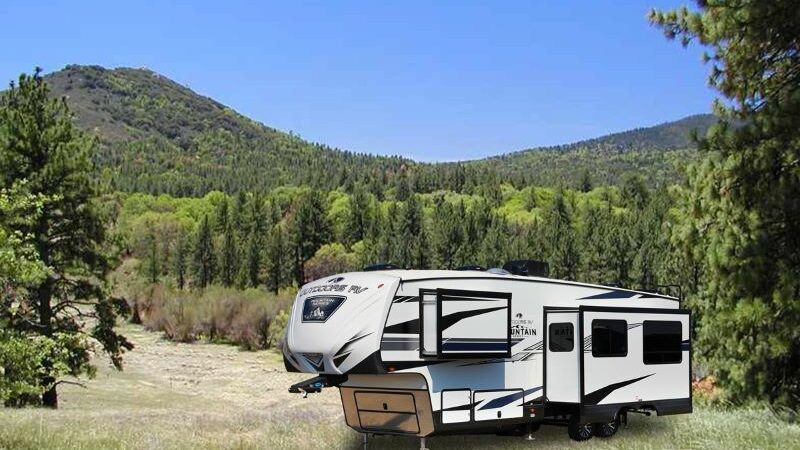Internet For RVing: What Are Your Options?
Thanks for your support! If you make a purchase using our links in this article, we may make a commission. And, as an Amazon Associate, I earn from qualifying purchases. See the full disclosure here.
Unless you’re a millionaire or enjoying retirement and want to go off the grid, the internet for the RVing lifestyle is essential. You gotta pay the bills, after all, and many full-time RVers are independent contractors who work from home. Even if you don’t need to work, like it or not, the internet is the hub of almost all information these days.
With cable and satellite TV still in their long-lasting death throes, the internet dominates our long-distance connections, social activities, entertainment sources, information gathering, and a large degree of navigational tools.
Internet options are far more numerous than they were ten years ago. Despite a focus on portability outside of RVing, RVers are arguably the ones that benefit the most from the latest and greatest technological breakthroughs in portable, on-the-fly connectivity.
What Is The Best Way To Get Internet For RVing?
The best way to get internet for RVing today is still Mi-Fi or using a smartphone as a hotspot. It’s the best way because it’s the most consistent. This is especially true with Verizon or T-Mobile, since those networks have so much reach, even in rural areas.
Now? The choice is a little more variable. Internet purely for RVing is becoming increasingly accessible (although slowly) with several decent options.
These include Starlink, the aforementioned Mi-Fi, USB Modems, portable Wi-Fi routers, an endless array of Wi-Fi hotspots spread out across the country, and what we look at as an end-around form of Mi-Fi.
Of course, it’s one thing to establish an internet connection while boondocking in the middle of the boonies. It’s quite another to establish reliable internet access while constantly on the move. Despite the advancements in technology, the US network grid leaves a lot to be desired.
This means that some devices may work outstandingly in some places, while others do not so much. We’re looking for the best of the best—devices and services that cover us no matter where we want to travel. That’s a tough sell, but there are some that more or less fit the bill.
RVers, like everyone else, need or want internet on the weekends as well. After all, if you’re working from home, it doesn’t matter if you’re in an RV or your home office. You still need to work on the weekends from time to time.
The problem is, that RVers typically have to deal with inconsistent internet access.
What Do Full-Time RVers Do For Internet?
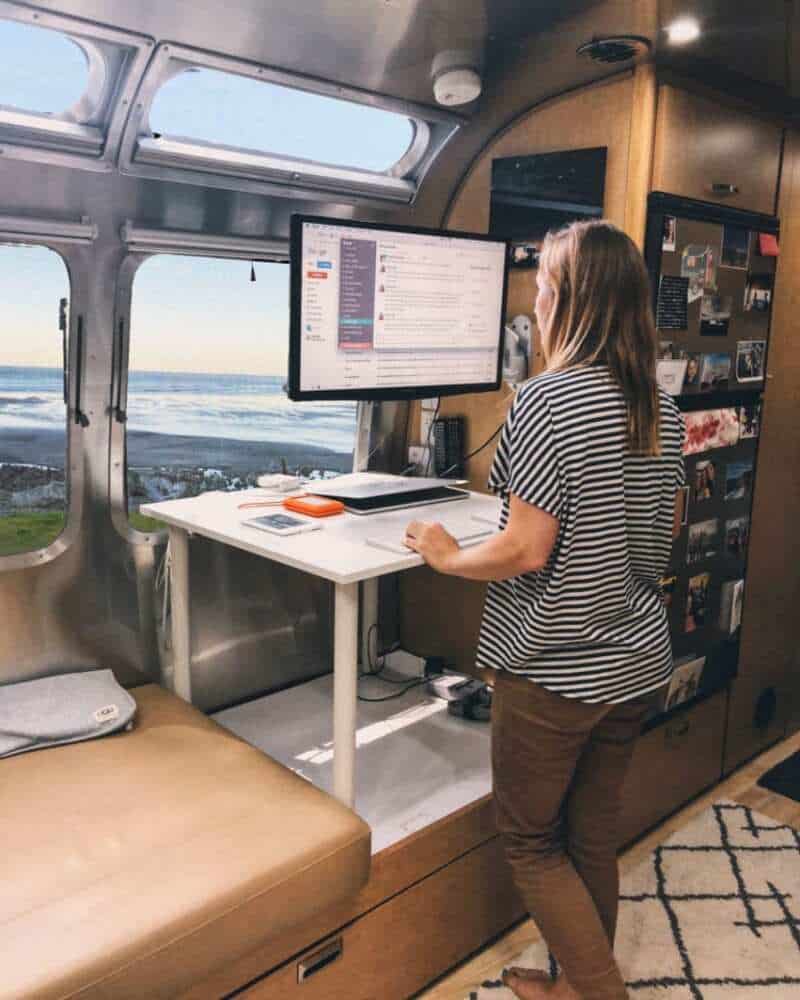
Fortunately, internet for RVing in 2023 is a lot better than it was in 2013. RVers have a lot of options, such as Starlink, Mi-Fi, portable Wi-Fi routers, Viasat, free Wi-Fi options that are spreading into more rural areas, and cellular boosters.
Even with all of that, internet for RVing typically boils down to Mi-Fi or hotspots to access it. There are several issues with this.
- Mi-Fi is restricted to cell tower availability
- Most cellular carriers that offer Mi-Fi have strict data caps
- Hotspots and Wi-Fi are not always reliable
- Mi-Fi and hotspots often struggle with large data amounts and 4k streaming
Then there is satellite coverage. We could write a novel on the horrors of Hughes Net, and ViaSat, the latter of which has a one-star rating on SiteJabber out of 112 reviews. Starlink is much better, but It’s expensive to get started, and you’ll have to go through a waiting period.
RVers are dependent on sites such as Campground Reviews to determine which campgrounds offer what and what the cell coverage looks like. Recently, T-Mobile picked up broadband spectrum 71, which is the go-to choice for rural connectivity and currently expanding among RVers willing to pay $99/mo. for the service.
It’s what put T-Mobile in the same conversation with Verizon when it comes to overall coverage.
Mike and Susan, who own RVBlogger, use a combination of Starlink, T-Mobile Home and Verizon Wireless in their Winegard. These three options keep them connected to the internet. They can stream TV shows, movies and sporting events. And they can even upload large video files to YouTube.
Starlink costs $150 a month, T-Mobile Home costs $50 per month, and Verizon costs $20 per month. This may seem like overkill, but when you work on the road like they do internet is a necessity, and having multiple options to access it is paramount.
Read on for many more details about these three options further down in the article.
Lesser Known RV Internet Options
Portable Wi-Fi routers are a thing, though they are far less popular than Mi-Fi devices. They are kind of like those old antenna devices people plugged into their laptop USB ports. It takes a typical telecom signal and converts it into Wi-Fi. They’re also known as Wi-Fi dongles, and Airtel is the biggest name within that industry.
Some RVers simply use what they have. With restaurants, gas stations, bookstores, retail chains, fast food chains, and more, all providing free Wi-Fi, it’s simply a matter of pulling in for what you need and leaving when you’re done. Internet for RVing is sometimes a game of take it when you can get it.
Is Campground Wi-Fi Reliable Internet For RVing?
Not always. Campground Wi-Fi is hit-and-miss most of the time. Most campgrounds offer it for free but, when you think about it, Wi-Fi is a lot like Bluetooth, and is very easy to interfere with. Wi-Fi has trouble with concrete, metal, glass, wood, asphalt, tile, and vinyl.
Internet for RVing is still a growing concept within campgrounds and most of them simply lack the infrastructure to broadly distribute it to RVers. For instance, it’s easy to clog up a single router with traffic. The more RVers on the Wi-Fi service, the slower it becomes.
Then there’s the question of equipment. What are campgrounds using? Only high-end and gaming routers are capable of handling up to 50 connections at once. It doesn’t take long for a small campground to fill up. Plus, most campgrounds don’t employ Wi-Fi extenders and repeaters, which expands coverage to longer distances.
If you have to do a lot of work, or you’re homeschooling your kids, you should never depend wholly upon campground Wi-Fi as your go-to. If you’re a gamer or love 4k/8k streaming, well, good luck.
What Is The Best Internet for RV Boondocking?
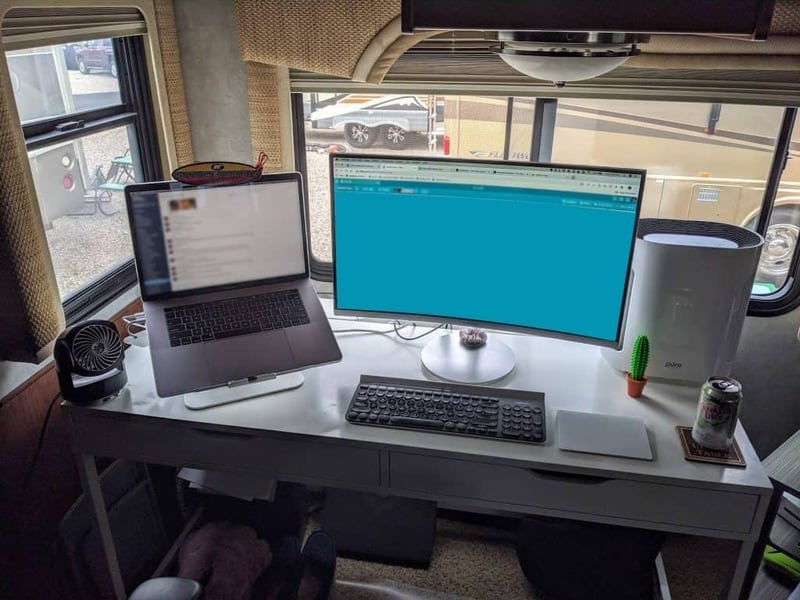
Here’s where things get fun. There’s nothing quite as exhilarating as finding a new, workable way to make boondocking even more exciting than it already is. There are a few options worth considering and, the best thing is, they’ll carry you whether you’re boondocking or not.
1. Starlink Internet For RVing
✅ What We Like
- Features a mobile version for RVers
- Unlimited data
- Global and regional coverage
- Portable, on-the-go internet service
⛔ What We Don’t Like
- Expensive hardware
- You’ll have to join the waiting line
Starlink should stand tall among the rest in terms of internet for RVing. It’s far better and faster than the likes of Hughes Net and ViaSat. Its problems are original and the same things that plague it today. It’s difficult to get your hands on one. Depending on how sold you are, it might be worth the wait.
When you finally get one, you have to fork over $600 for the privilege of the wait. Once it’s in your hands, though, it probably offers the best coverage you’re likely to get. It’s not the fastest internet speed in the world, but you’ll have the same signal in New York as you will in Alaska.
Starlink comes with either Mobile or Mobile Priority service and allows RVers to stop and start service whenever they want. Internet for RVing doesn’t work that way for the most part, so that’s a boon for part-time RVers. For RVers that need speed, the Mobile and Mobile Priority provide two levels.
| Specs | Mobile | Mobile Priority |
|---|---|---|
| Downloads | 5 Mbps to 50 Mbps | 40 Mbps to 220 Mbps |
| Uploads | 2 Mbps to 10 Mbps | 8 Mbps to 25 Mbps |
| Range | 99% of North America | 99% of North America |
| Latency | Less than 99 ms | Less than 99 ms |
2. Verizon Internet For RVing
✅What We Like
- One of the most extensive rural coverage carriers available
- Deploying 5G mid-band coverage in 2023
- Excellent broadband compatibility
- Aggressive at rectifying network congestion
⛔ What We Don’t Like
- That same aggression means throttling your speeds
- Just now seriously rolling out their mid-band 5G coverage
Verizon’s claim to fame is the same as it was in the beginning. This company built a coverage empire that was unrivaled until the recent surge from T-Mobile (which we’ll get to shortly). Verizon is known for its solid coverage in rural areas. However, it’s not perfect.
There are still plenty of places you can go throughout the country and experience coverage drops from Verizon. The main ways to use Verizon are through Mi-Fi or using your smartphone data plan as a hotspot for the other devices in your RV.
Verizon is also stepping up to enable roaming on some of AT&T’s LTE bands, broadening coverage and making life a little easier for RVers. Verizon is also pushing to extend its coverage throughout rural areas aside from its additional roaming features with AT&T.
3. T-Mobile Internet For RVing
Our Pros and Cons
- Innovating with old technology
- Offers unthrottled 4G LTE data
- Three plans with RV Data Sat
- T-Mobile is now the leader in 5G coverage
⛔ What We Don’t Like
- You have to have a specific plan and router to take full advantage
- Plans are a little confusing
T-Mobile is a quiet competitor and, thanks to their enormous efforts in 5G coverage, now grasps the largest 5G coverage network in the U.S. To top it off, T-Mobile is making huge strides in filling in its coverage gaps on inferior bands.
Not only that, there is a hidden fact that most people don’t know and that RVers are discovering to their advantage. T-Mobile purchased an archaic band that other networks turned down, otherwise known as Band 71.
Band 71 is a UHF band that features a low, far-traveling signal. This is an obvious advantage for rural areas and the key to how efficiently T-Mobile is expanding its coverage.
Internet for RVing is fairly diverse, but it’s a good idea to jump on this bandwagon. You will have to go through RV DataSat and purchase a Pepwave Max Transit Mini Router. Once in hand, you have three data options: Blue, Pink, and Red. It’s also unlimited for the first 75 to 100 GB per month, so no throttling until you exceed that number.
How Much Is Starlink For RVs?
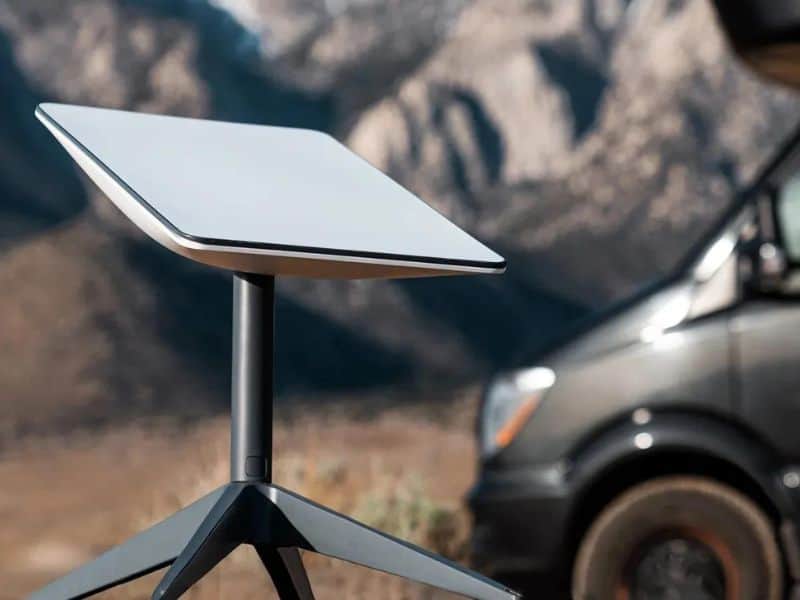
Given the fact that the internet for RVing is going full satellite or cellular, Starlink is a natural curiosity. For years, we were stuck with the likes of Hughes Net and ViaSat, two horrible options among horrible options. Starlink aims to change things for the better.
Recognizing the need for internet service among RVers, Starlink even offers an RV plan, which includes the Mobile and Mobile priority tiers. Starlink, unlike ViaSat and Hughes Net, won’t throttle your speeds either.
It’s not just the monthly cost for Starlink that you have to worry about. There’s a $99 deposit just to get on the waiting list for one. Once your wait time is over, which might take months, it’s $599 for the equipment.
Mobile Priority will run you $250/mo. The cost is $100 less per month. Mobile is the same thing as Mobile Regional, with a focus on internet for RVing wherever you are in North America. Mobile Priority is internet access with the same RV focus but is tailored for on-the-move RVers.
Also, Mobile Priority includes the same features that Mobile Global users get for $50 less, just without the “in-motion” advantage. Regardless of the plan, you get unlimited mobile data, so long as you aren’t sitting out in international waters. If you’re in an RV and that’s the case, something is horribly wrong.
Final Thoughts About Internet for RVing
Internet for RVing is a bit deceptive. From afar, taking in the entire thing, it looks as if your options are fairly extensive, with several ways to get internet access on the go. However, it’s not that simple, with the constraints of the internet infrastructure in the U.S. not being the best in the world.
Fortunately, things are looking up for RVers. Starlink, Verizon, and T-Mobile especially are looking to grab huge chunks of the RV internet access market.
T-Mobile’s purchase of Band 71, Verizon’s extensive push for more coverage, and Starlink’s superior satellite internet are all vying for our attention. If you’re looking for the most dependable internet on the go, place your bet on those three.
Related Reading:
–Does Walmart Have Free Wifi?
–10 Most Googled Full-Time RV Living Questions
–Can You Park An RV At A Hotel? We Have!
–10 Best RVs With Office Space For Working Remotely
Thomas Godwin – Author and Part Time RVer
Thomas Godwin is a full-time freelance writer with a BFA in Creative Writing, a U.S. Marine, and an avid outdoorsman.
When he’s not writing, he’s raising chickens and Appleyard ducks. Thomas also constructs teardrop campers (attempting to anyway) and kayaks the Blackwater River with his wife, two daughters, and his Dobermans.

Source: https://rvblogger.com/blog/internet-for-rving-what-are-your-options/

